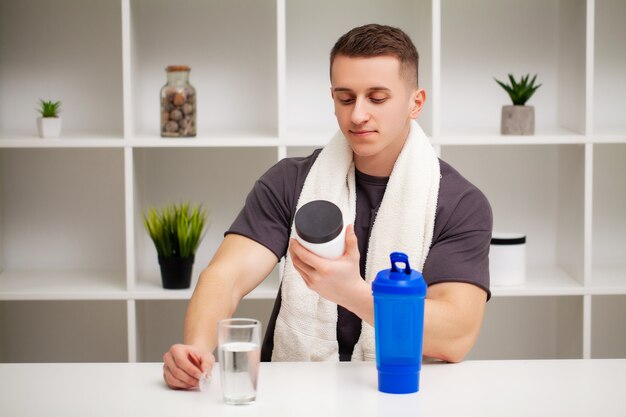Maintaining optimal hydration and electrolyte balance is essential in animal husbandry, particularly when managing livestock under stress or illness. Electrolyte drenches like S-K’s Electrolyte Drench are specifically formulated to restore critical nutrients and fluids quickly, helping animals recover from dehydration, heat stress, and metabolic disturbances. This comprehensive guide provides a deep dive into the importance of electrolyte drenches, step-by-step instructions on administering S-K’s Electrolyte Drench, practical tips for various scenarios, and best practices for keeping animals healthy and resilient.
Why Electrolyte Drenches Are Essential for Livestock Health
Electrolytes are minerals such as sodium, potassium, calcium, and magnesium, which dissolve in water and carry an electric charge. These ions are critical for a range of bodily functions, including nerve transmission, muscle contraction, and hydration. For livestock, electrolytes help maintain fluid balance, which is vital for temperature regulation, digestion, and cellular function.
When animals become stressed, ill, or dehydrated, their electrolyte levels can drop significantly, leading to weakness, decreased productivity, and even life-threatening complications. Situations like transport, extreme temperatures, illness, and calving or lambing can disrupt electrolyte balance, making it crucial to restore these levels quickly. S-K’s Electrolyte Drench is specifically formulated to meet the immediate needs of livestock, providing a concentrated dose of essential electrolytes and nutrients that help animals bounce back quickly.
Understanding S-K’s Electrolyte Drench Composition and Benefits
S-K’s Electrolyte Drench is designed to replenish essential minerals and fluids efficiently. It includes:
- Sodium and Chloride: These are the primary electrolytes responsible for fluid balance and blood pressure regulation.
- Potassium: Critical for muscle function and nerve transmission, potassium helps prevent muscle weakness and fatigue.
- Magnesium: Known for its calming properties, magnesium supports nerve function, reduces muscle cramps, and assists in energy production.
- Calcium: Essential for bone health and muscle contraction, calcium prevents metabolic issues such as milk fever in lactating animals.
- Glucose: Provides an immediate energy source to aid recovery and combat hypoglycemia.
Each component serves a unique purpose in restoring the animal’s physical well-being, ensuring they receive both hydration and necessary nutrients.
Preparing for Electrolyte Drench Administration

Before administering S-K’s Electrolyte Drench, gather all necessary equipment and ensure your workspace is clean and organized. Preparation is essential to avoid contamination and ensure an effective drenching process.
read more info=Exploring the Size of Rory Kokot’s Arm
Equipment Needed
- Drenching Gun: A drenching gun or syringe will help deliver the electrolyte solution directly into the animal’s mouth.
- Measuring Cup: For accurate dosing.
- Gloves: To maintain hygiene and reduce the risk of contamination.
- Restraint Equipment: Use ropes, halters, or helpers if needed to safely restrain the animal.
Dosage Guidelines
The recommended dosage of S-K’s Electrolyte Drench may vary depending on the animal’s size, age, and specific health condition. Always consult the product label or a veterinarian for guidance on proper dosage. In general:
- Cattle: 250–500 ml
- Sheep/Goats: 50–150 ml
- Swine: 30–100 ml
- Poultry: Add to drinking water per manufacturer guidelines
Step-by-Step Guide to Administering S-K’s Electrolyte Drench
Administering an electrolyte drench can be challenging, especially with large or restless animals. Follow these steps to ensure safe and effective delivery of the solution.
Step 1: Prepare the Electrolyte Solution
- Read the Instructions Carefully: Confirm the dosage based on the animal’s size and condition.
- Measure the Solution: Use a measuring cup to portion the correct amount of S-K’s Electrolyte Drench.
- Check the Temperature: The solution should be at room temperature. Cold fluids can shock the system and cause discomfort.
Step 2: Restrain the Animal Safely
- Use Restraint Tools if Necessary: Restrain the animal with a halter or have a helper hold the animal securely.
- Ensure Minimal Stress: Approach calmly and avoid sudden movements. Stressed animals can resist or react violently, increasing the risk of injury.
Step 3: Position the Drenching Gun
- Open the Animal’s Mouth: Gently hold the animal’s head, and using your fingers or a mouth speculum if needed, open the mouth carefully.
- Insert the Drenching Gun: Position the drenching gun or syringe at the side of the mouth, aiming for the back of the throat but avoiding the windpipe to prevent aspiration.
Step 4: Administer the Solution
- Slowly Release the Solution: Gradually squeeze the drenching gun to release the solution, allowing the animal time to swallow.
- Monitor Swallowing: Ensure the animal is swallowing and not choking. Slow down or pause if the animal shows any signs of distress.
Step 5: Post-Administration Monitoring
- Observe the Animal: Monitor the animal for any signs of distress or adverse reactions after administration.
- Provide Fresh Water: Encourage the animal to drink water afterward, as it will help dilute the electrolytes and improve absorption.
Practical Scenarios and Tips for Using S-K’s Electrolyte Drench
Different situations may require variations in the approach to drenching. Here are some common scenarios and practical tips to ensure effective use.
Drenching During Extreme Heat
Heat stress is common in livestock, especially in summer. Animals may lose a significant amount of fluids and electrolytes, making them prone to dehydration.
- Increase Frequency: In cases of extreme heat, provide smaller, frequent doses to maintain hydration levels.
- Offer Shade and Water: Always have shade and water available, as this will prevent dehydration from worsening.
- Monitor Closely: Watch for signs of heat stress, such as heavy panting or lethargy, and administer additional electrolyte drench as necessary.
Drenching During Illness or Recovery
When animals are recovering from illness, their electrolyte needs may differ, particularly if they have suffered from diarrhea or respiratory conditions.
- Adjust Dosage as Needed: Animals recovering from illness may require a higher dose of electrolytes. Consult a veterinarian if unsure.
- Ensure Gentle Restraint: Sick animals are more sensitive, so be particularly gentle during restraint and administration.
- Add Supportive Care: Provide additional nutrition, such as high-energy feed or vitamin supplements, to aid the recovery process.
Drenching Young or Small Animals
Administering an electrolyte drench to young or small animals, such as lambs or piglets, requires extra caution.
- Use a Smaller Drenching Gun: Select a drenching gun or syringe with a small nozzle suitable for young animals.
- Lower Dosage: Measure an appropriate dose based on the animal’s weight and consult the product label for guidance.
- Handle with Care: Hold young animals gently and ensure they are not distressed during the process, as they may be more vulnerable to choking.
Recognizing Signs of Dehydration and Electrolyte Imbalance in Livestock

Being able to identify signs of dehydration or electrolyte imbalance is critical for effective intervention. Early detection can prevent complications and improve recovery time.
- Sunken Eyes: One of the earliest signs of dehydration, sunken eyes indicate fluid loss.
- Dry Mucous Membranes: Dry gums and mouth suggest a lack of hydration and require immediate intervention.
- Reduced Appetite and Lethargy: Animals that lose interest in food or show signs of fatigue may be suffering from an electrolyte imbalance.
- Dark, Concentrated Urine: This indicates that the animal is conserving water, which is common in dehydration.
Responding promptly to these signs by administering an electrolyte drench can mitigate severe health risks and help stabilize the animal’s condition.
Maintenance Practices to Prevent Electrolyte Imbalances
Prevention is always better than cure. Incorporating good husbandry practices can help maintain optimal hydration and electrolyte levels, reducing the need for emergency interventions.
- Provide Regular Access to Fresh Water: Ensuring animals have constant access to clean, fresh water is essential for maintaining fluid balance.
- Optimize Diet: A balanced diet rich in essential nutrients supports general health and can reduce the risk of electrolyte deficiencies.
- Manage Environmental Stressors: Protect animals from extreme temperatures and stressful conditions that could lead to dehydration and electrolyte loss.
- Use Preventative Drenching: For animals in high-stress situations (such as transport or high heat), consider a preventative dose of S-K’s Electrolyte Drench.
By proactively managing these factors, you can support your livestock’s health and reduce the likelihood of electrolyte imbalances.
FAQs on S-K’s Electrolyte Drench
Q1: How often can I administer S-K’s Electrolyte Drench?
A: Frequency varies depending on the animal’s condition and needs. Generally, once or twice daily is sufficient, but consult a veterinarian for guidance in severe cases.
Q2: Can I mix S-K’s Electrolyte Drench with other supplements?
A: It’s usually safe, but always check compatibility with a veterinarian. Mixing with incompatible supplements could reduce the drench’s effectiveness.
Q3: Is S-K’s Electrolyte Drench suitable for all livestock?
A: Yes, it’s formulated for a wide range of livestock, but dosing should be adjusted based on species, age, and size.
Conclusion
S-K’s Electrolyte Drench offers a valuable solution for restoring hydration and electrolyte balance in livestock, providing vital support during stressful situations, illness, and high temperatures. This guide offers a comprehensive overview of administering the drench safely and effectively, helping to ensure your animals receive the care they need when facing challenges. With careful administration, prompt response to dehydration signs, and proactive maintenance practices, you can ensure your livestock remain resilient, healthy, and productive.





